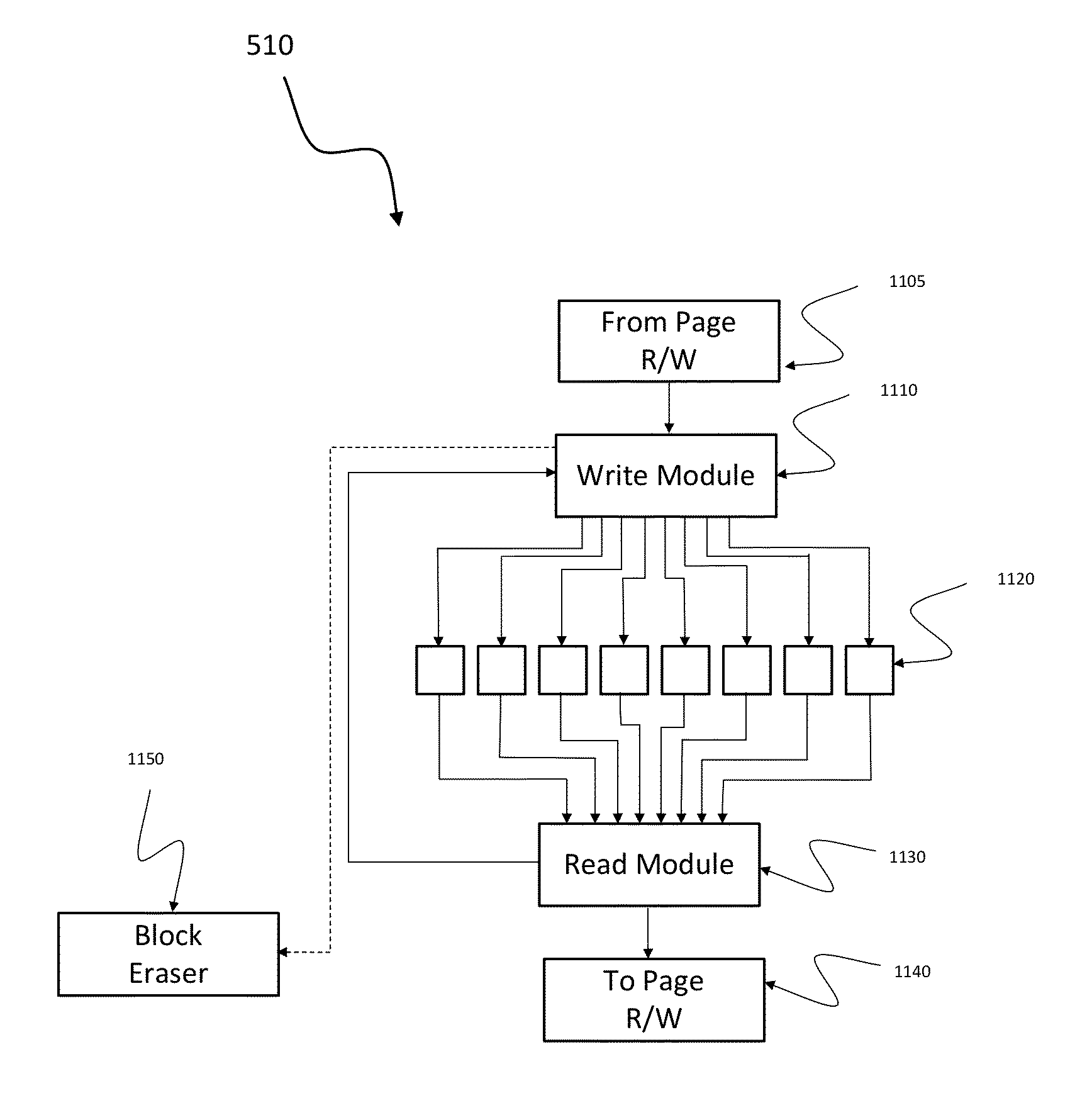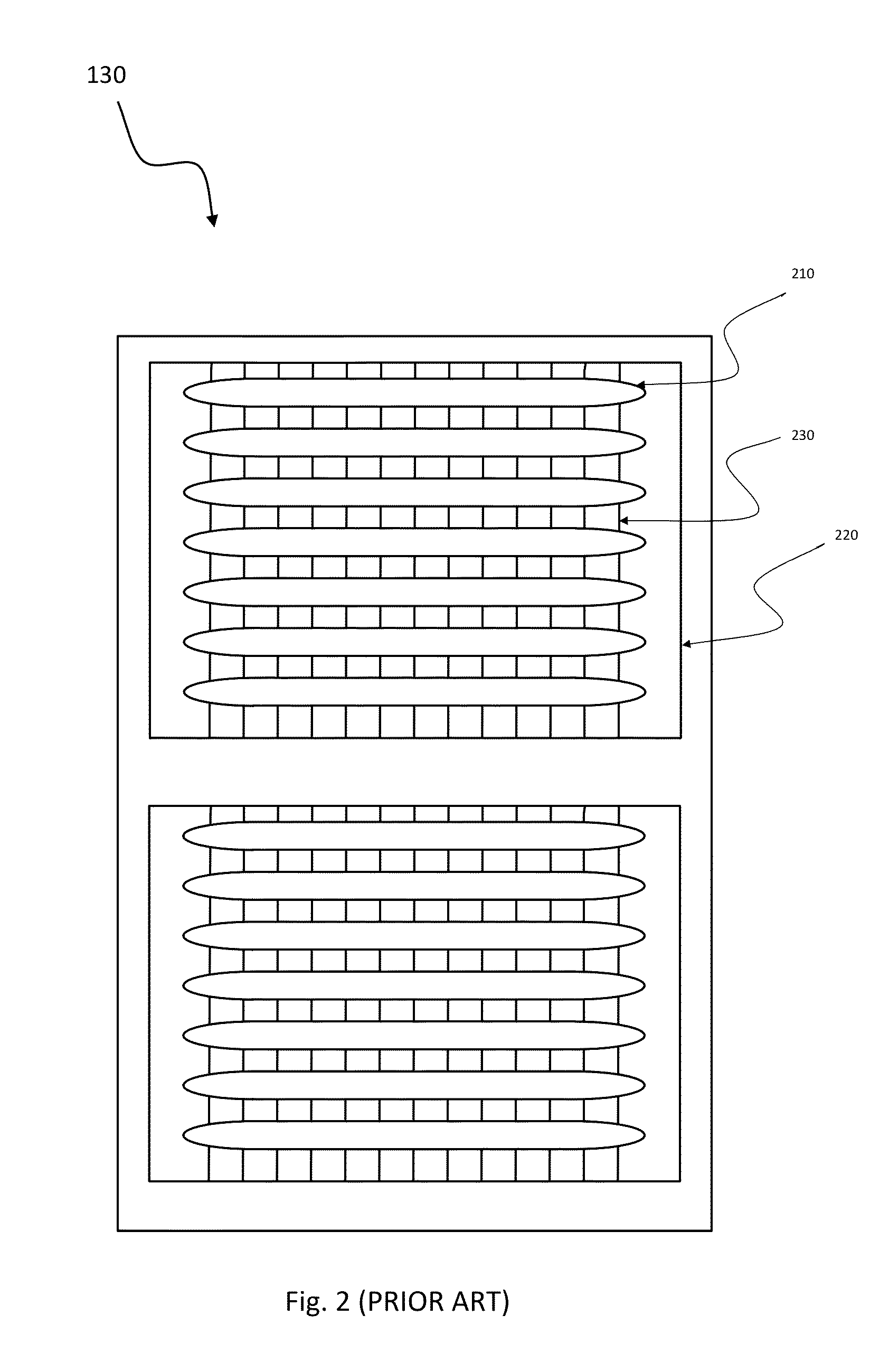Differential vector storage for non-volatile memory
- Summary
- Abstract
- Description
- Claims
- Application Information
AI Technical Summary
Benefits of technology
Problems solved by technology
Method used
Image
Examples
Embodiment Construction
[0037]Improved methods for storage on a flash system are described herein. These methods are collectively called “differential vector storage” methods hereinafter. Some of these methods provide for transforming information given by sequences of bits into charge levels across multiple cells such that cells can be rewritten multiple times before an erase cycle, can store more than one bit on average in a cell, do not need to have a common reference for the cells for reading and writing information, are resilient to common leakage of the cells, and provide efficient processes for transforming bits into charge levels and charge levels across multiple cells into bits.
[0038]FIG. 5 illustrates a structure of a cell unit 130 that might be used in a memory storage device according to one embodiment of the present invention. Several cells 530 within a page are grouped into one unit 520 called a “fundamental group of cells.” These cells have a common R / W Module 520 that reads the charges of th...
PUM
 Login to View More
Login to View More Abstract
Description
Claims
Application Information
 Login to View More
Login to View More - R&D
- Intellectual Property
- Life Sciences
- Materials
- Tech Scout
- Unparalleled Data Quality
- Higher Quality Content
- 60% Fewer Hallucinations
Browse by: Latest US Patents, China's latest patents, Technical Efficacy Thesaurus, Application Domain, Technology Topic, Popular Technical Reports.
© 2025 PatSnap. All rights reserved.Legal|Privacy policy|Modern Slavery Act Transparency Statement|Sitemap|About US| Contact US: help@patsnap.com



